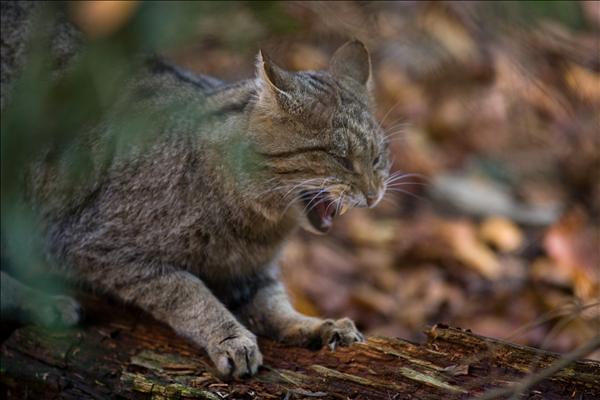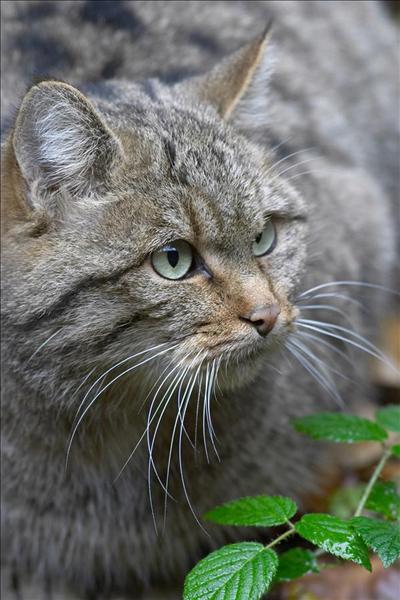Situation in Europe
In Europe, according to the IUCN categories for Red Lists (2001), the wildcat is not considered as endangered. However, the hybridisation with the domestic cat is seen as a significant factor for the decline of the populations. Some countries have very big populations which are even growing in size, while in other countries the wildcat is seriously threatened or extinct, or has dwindling populations.
Looking at Austria's neighboring countries, the situation in Germany, for instance, shows a comparatively positive picture. The population is estimated at between 1.700 and 5.000 animals. While individual populations are growing, other groups are increasingly endangered by high traffic densities and landscape fragmentation. The main areas of circulation lie in south-western and central Germany and are largely separated from one another.
There are also relatively stable wildcat populations in Italy, Slovenia, Hungary and Slovakia. However, there are no wildcats in the neighboring country of the Czech Republic, where the species is also considered extinct. Attempted releases into the wild in Bohemia have remained unsuccessful. In Switzerland, the wildcat is confined to the Jura mountains, where lures were also recently installed in order to improve knowledge of the propagation of wildcats.
Looking at Austria's neighboring countries, the situation in Germany, for instance, shows a comparatively positive picture. The population is estimated at between 1.700 and 5.000 animals. While individual populations are growing, other groups are increasingly endangered by high traffic densities and landscape fragmentation. The main areas of circulation lie in south-western and central Germany and are largely separated from one another.
There are also relatively stable wildcat populations in Italy, Slovenia, Hungary and Slovakia. However, there are no wildcats in the neighboring country of the Czech Republic, where the species is also considered extinct. Attempted releases into the wild in Bohemia have remained unsuccessful. In Switzerland, the wildcat is confined to the Jura mountains, where lures were also recently installed in order to improve knowledge of the propagation of wildcats.
Evaluation of the status of the wildcat
The book on mammals by Friederike Spitzenberger offers a good overview of the situation of the wildcat. Summing up, Kurt Bauer evaluates the status of the wildcat as follows:"In Austria nowadays, the wildcat counts as a rare guest which, since its reappearance after the extinction of the last autochthonous marginal populations (1997), is caught or observed about five times every ten years.
As a comparison […] shows, the appearances in the last decades happen largely in landscapes in which the species had survived the longest - the Basin of Klagenfurt and the edge of the bay of Graz, the thermal line, copses and rocky landscapes in the Weinviertel and on the border of the Waldviertel granite plateau and the foothills of the Böhmenwald and Sauwald.”
From the contribution to the Red List
Friederike Spitzenberger reaches the same conclusion in her contribution to the Red List of endangered species in Austria:"Status of the wildcat, Felis silvestris: Regionally extinct. Species no longer extant in Austria. The population has been verifiably eradicated or has died out (i.e. there are good reasons to believe that their populations are extinct). After the 1950s, as the autochthonous breeding stock died out in Austria, there have only been sporadic and localized reports that probably refer to migrated animals from neighboring populations. There is currently no sign of a resident reproducing population in Austria. As in the case of the lynx, there is a lack of biological investigations into the wildcat in Austria. It would be highly desirable to introduce a wildlife conservation program based on the results of such biological examinations in some of Austria's neighboring countries, in view of the sound level of knowledge and satisfying conservation status there.”
BAUER, K. (2001): Wildcat Felis silvestris SCHREBER, 1775. - In: Spitrenberger F. (ed.) (2001):
Mammal fauna in Austria. - Grüne Reihe of the BMLFUW, 13: 665 - 671, Vienna.




